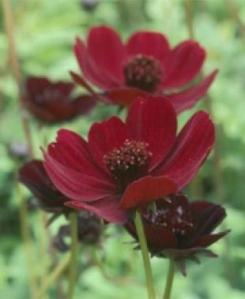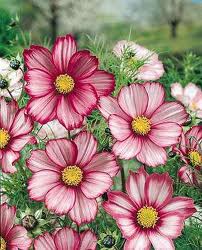 Garden Tools for Cosmos
Garden Tools for Cosmos 
You will also need a small selection of garden tools for your flower bed. This is one area that I don’t believe in buying these cheap, flimsy tools. You save more money in the long run by purchasing tools that are sturdy and of superior quality.
Your tools should include the usual large ones, plus a set of the smaller hand varieties. I find both come in quite handy and each has a particular use at a particular time.

Garden Tools ~ quality gardening tools are a good investment
Now you can have the benefits of working with garden tools designed for professionals. Heavy duty, high-grade materials used in gardening tools for landscapers, arborists and professional gardeners mean your tools will last longer and perform better.
Good quality garden tools are a wise investment for all gardeners from novices to master gardeners. With proper care and maintenance your garden tools will last a long time, if not a lifetime. Start with the basic gardening tools and build your collection as you gain experience and as your garden grows.
Basic garden tool set:
- spading fork
- round-end shovel
- rake
- garden shears or pruners
- hoe
Gardening Trends

Before digging into the garden make sure you have the right tools
Digging around in your garden is not exactly brain surgery, but like surgeons, every gardener should have the right tool for the right job.
Some may say that a shovel is just a shovel, but an expert in Penn State’s College of Agricultural Sciences points out that real gardeners need a spade — and about four other essential gardening implements.
“These days there are catalogs and stores with very specialized equipment, but many gardeners really just need some basic tools,” says J. Robert Nuss, professor of ornamental horticulture. “Once you have a solid set of tools, then you can branch out into specialty equipment.”
Nuss recommends five basic tools:
A long-handled spade. This tool is designed for digging. The blade is straight and set at an angle so it cuts easily into the soil. “A spade is not a shovel,” Nuss explains. “A shovel is designed like a scoop and is used to move material from one place to another.” 
A spading fork. This tool has flat, square tines and is used for moving heavy soil. “Spading forks are invaluable for preparing soil in the spring and harvesting some types of vegetables in the fall,” Nuss says. “Don’t confuse it with a pitchfork, which has rounded, slender tines and is used to move straw or compost.” – see other side 
A steel rake.These large rakes are used to break up clay, to smooth out soil and to rake in fertilizers. “If the garden is large, get a wide, heavy rake,” Nuss says. “It wouldn’t hurt to have a wide leaf rake for lawn work.”
A hoe. Hoes are used to form rows, cover seeds, move soil, cut out weeds and make holes for planting seedlings. “Hoes come in all types and sizes, but most gardeners don’t need heavy ones,” Nuss says. “The most versatile hoes are dual-purpose models, with a triangular cutting head on one side and a cultivating tool with three tines on the other side.”
A hand trowel. Any hand tool that makes gardening more efficient is an invaluable addition to the homeowner’s arsenal of tools. “Hand tools are best for marking rows, weeding, making furrows and moving small plants,” Nuss says.
Nuss says when it comes to gardening, choosing a big tool isn’t necessarily better. “Heavy tools are fine for big people, but if you are short on size or energy, pick smaller tools,” he explains. “The same logic applies to picking the best handle length. Tools are extensions of the body and should be used for extra leverage or reach when pulling or cutting.” 
Nuss advises using heavy-handled tools for moving soil and heavy material. For weeding and cultivation jobs, he recommends using a tool with a lightweight handle.
Old House Web
** I also highly recommend a good pair of garden gloves as well **
































































